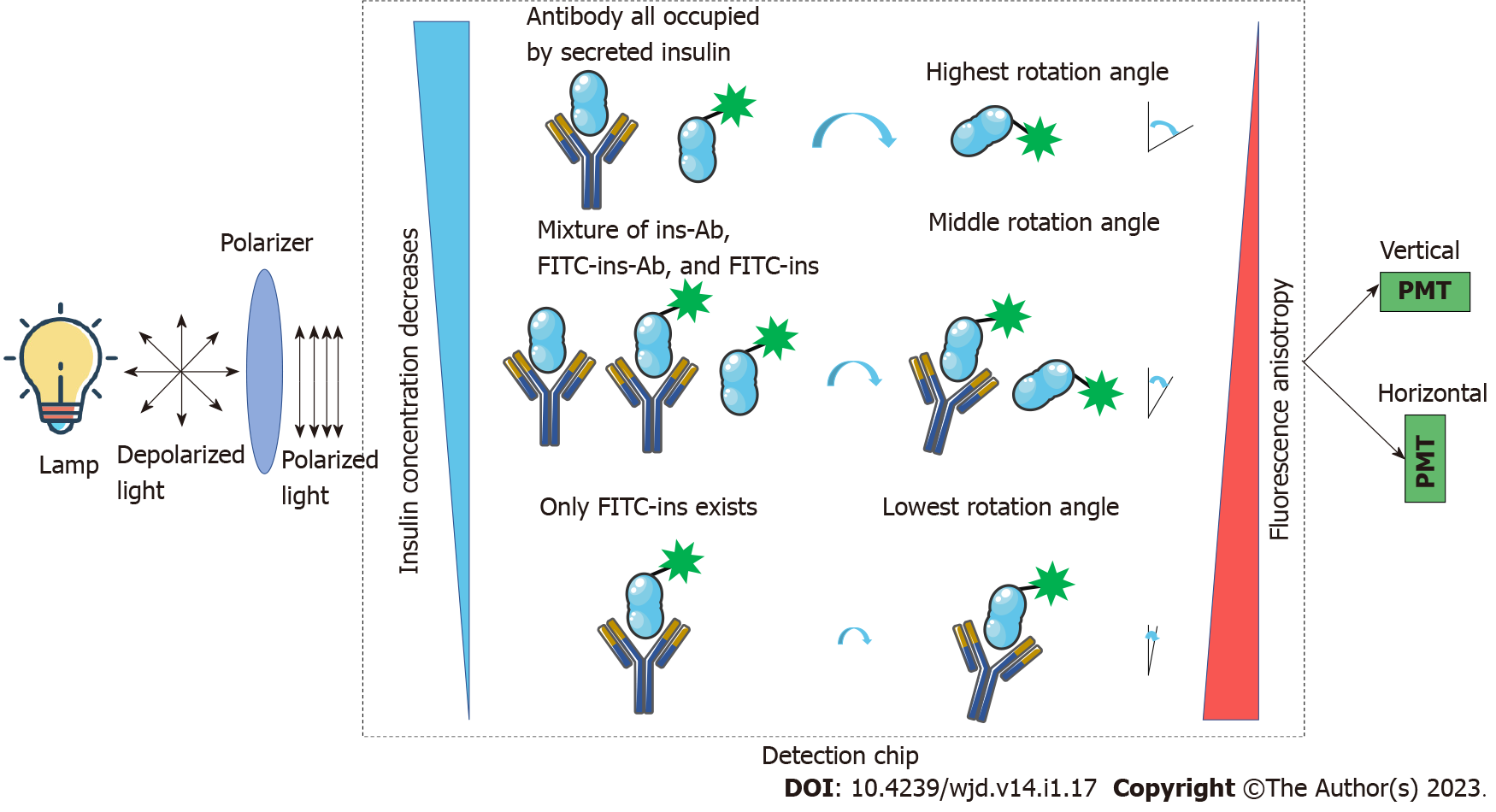Copyright
©The Author(s) 2023.
World J Diabetes. Jan 15, 2023; 14(1): 17-25
Published online Jan 15, 2023. doi: 10.4239/wjd.v14.i1.17
Published online Jan 15, 2023. doi: 10.4239/wjd.v14.i1.17
Figure 2 Theory of fluorescence anisotropy-based insulin sensing.
The lamp generates depolarized light and goes through the polarizer, and after polarization, the polarized light is used as the excitation source for the fluorophores. Different concentrations of non-labeled insulin will compete with fluorescein isothiocyanate-labeled-insulin for insulin antibodies, thus, generating different fluorescence anisotropy which can be sensed by a vertical and horizontal photomultiplier. The sensed signal is used for the calculation of non-labeled insulin concentration. FITC: Fluorescein isothiocyanate; PMT: Photomultiplier.
- Citation: Li W, Peng YF. Advances in microfluidic chips based on islet hormone-sensing techniques. World J Diabetes 2023; 14(1): 17-25
- URL: https://www.wjgnet.com/1948-9358/full/v14/i1/17.htm
- DOI: https://dx.doi.org/10.4239/wjd.v14.i1.17









